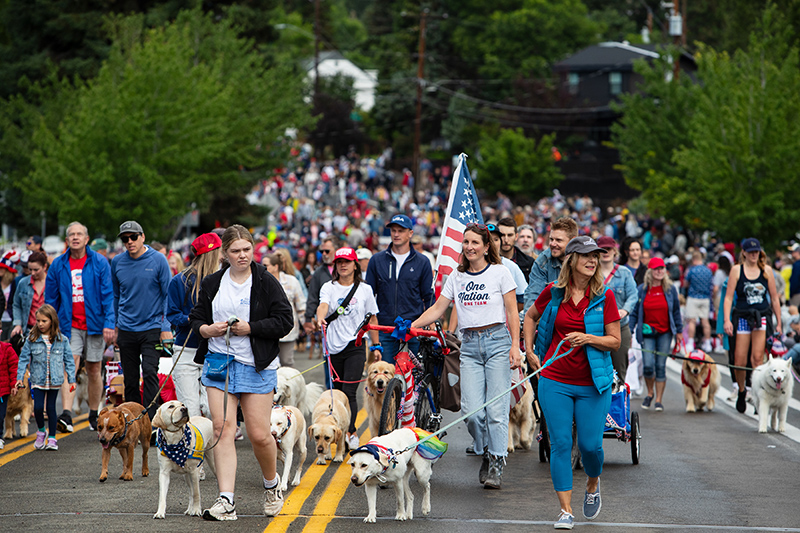Manufacturers try to stop offensive language on clothing
Published 12:00 am Sunday, April 1, 2018

- Annie Wu recently took the position as H&M’s diversity manager in New York. Wu was hired after the company was taken to task for a hoodie that raised complaints of racism. (Karsten Moran/The New York Times)
Every once in a while, tucked into the stream of speedily made garments rushed into stores, designs with shockingly bad taste stand out: a shirt comparing women to dogs at Topman, symbols of the Holocaust on a top at Zara, a slogan that trivializes sexual consent on a piece at Forever 21, or words like “slave” and “slut” used as decorative details on T-shirts at ASOS and Missguided.
Brands, even as they offer mea culpas, rarely explain how such blunders come to pass. But problematic designs seem to repeatedly slip past layers of buyers, designers, stylists, marketers and managers before being caught by consumers.
Retail experts blame a heated competitive environment, where companies, many of them based in Europe, are spread thin trying to cater to a global customer base that is easily bored, is extremely demanding and can buy almost anything via e-commerce. Many brands develop a cavalier attitude: Churn out products now, ask forgiveness later.
But with easy access to social media, shoppers are increasingly aware of — and vocal about — cultural appropriation, derogatory messaging and insensitive references. In response, several retailers say that they are beefing up the approval process for designs and investing in digital screening technologies.
Still, distasteful designs will probably continue sneaking onto store shelves. Industry experts said cultural-awareness training and virtual sampling techniques that run spot checks on products can only go so far in a business marked by fast-shifting trends and high employee turnover.
Earlier this year, H&M, one of the largest clothing retailers in the world and a repeat offender, was taken to task over a children’s hoodie emblazoned with the phrase “coolest monkey in the jungle” and modeled in marketing materials by a young black boy. The description, which has been used to dehumanize black people, set off protests at South African stores that left mannequins toppled and racks overturned.
In the aftermath, H&M chose a lawyer and company insider, Annie Wu, to lead a new four-person team at its Stockholm headquarters focused on global diversity and inclusiveness.
“We want to be held accountable,” she said recently in her first interview since taking the job.
“We didn’t recognize that in this now new age of transparency,” she added, “what the brand stands for is super important to people.”
Lost in translation
Fast fashion companies, which specialize in low-priced, quickly produced clothing and have grown faster than the apparel industry as a whole for years, are under pressure to be more prolific and provocative as they sell across more borders.
H&M, which added 479 stores last year, has more than 4,000 stores in dozens of countries. Inditex, the enormous parent company behind Zara, has more than 7,500 stores in 94 countries.
Zara said it produces 20,000 designs each year, 98 percent of them created in-house, all sent through multiple reviews before being offered for sale. But some of the outsourced designs have proved problematic.
When fashion is contracted out, “there’s a lot less control, a lot less oversight and involvement from the company along every step of the process,” said Felipe Caro, a business professor at the University of California, Los Angeles, who has spent years studying Zara.
Last year, critics complained that images of frogs on a Zara skirt resembled a cartoon character called Pepe, which was designated a hate symbol of the alt-right by the Anti-Defamation League.
The skirt was designed by an independent Spanish artist based in London. In a statement at the time, he said that the frogs had “no connection at all with anything related to hate, violence or discrimination.”
A few months ago, during a long day spent styling and photographing products for H&M’s website, no one on the Stockholm set appeared to raise concerns about one more item to process, the hoodie with the offensive message, according to a person familiar with the shoot.
Critics said the garment might have been flagged if H&M’s team was more diverse.
“It’s so easy to avoid this kind of controversy,” said Angel Sinclair, the founder of the advocacy group Models of Diversity. “If you care about being culturally sensitive, just be more culturally inclusive of talent and managers in the business.”








